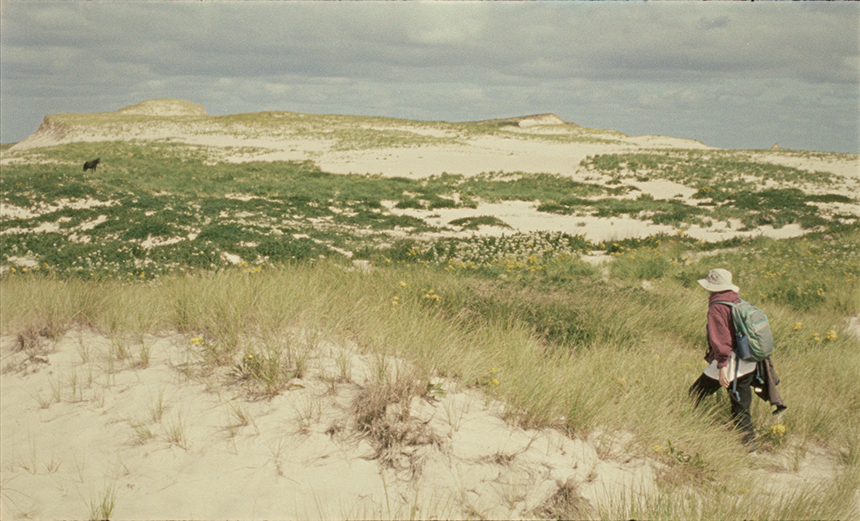Hot Docs 2022 Review: GEOGRAPHIES OF SOLITUDE, Lovely Contemplation on Nature, Filmmaking, Human Existence
Jacquelyn Mills' documentary is one of the loveliest feature debuts in years.

We are presented with a night sky; thousands of stars are twinkling, a shooting star appears and crosses the screen. It's so picturesque it looks almost fake, very graceful but nonetheless a computer-generated animation, perhaps.
Then the horses at the bottom of the screen begin to move. Then a moving lantern. It is dawn, and we realize the scenery that has been introduced is real. So starts the miraculously beautiful Geographies of Solitude.
Zoe Lucas is a naturalist/environmentalist. She first came to Sable Island, a patch of land 20 miles long, one mile wide and 100 miles off the coast of Nova Scotia, in 1971 to study wild horses living there. She fell in love with the island and couldn't wait to get back.
She got a job as a cook in the seal population research team, then, off and on, spent some 9,000 days there and made it her home. She has been meticulously logging data, not only on the horse population, but also sorting through mountains of plastic debris being washed up ashore, diligently cataloging them, leaving records of environmental impacts of the Anthropocene era.
Her shed is full of found treasures both alive and stationary: stacks of note books with daily written reports, photo slides, petri dishes, wind chimes made out of washed up materials and crystals, meticulously cataloged insects and other specimen in jars, patches made out of thousands blown balloons, and plastic vats of debris, washed up ashore, yet to be cleaned and cataloged.
Filmmaker Jacquelyn Mills, in collaboration with Lucas, lovingly documents all that a windswept remote island can offer -- sand dunes, horses, seals and insects -- in its intricate ecosystem. She also comments on the human footprints on the environment through Lucas while capturing some of the most breathtakingly gorgeous images on 16mm film. It includes naturally exposed film stocks only by moonlight and hand-printed footage using natural surroundings, like horse dung, sand, kelp and yarrow.
Soundscapes play a big part in the film, too. It's filled with the humming of the seals, insects, never-ceasing winds, neighs of the horse, and waves. Using a small contact microphone, in Mills' hand, tiny insects' footsteps and the creaking of an abandoned wooden structure turn into music.
As Lucas says in the beginning of the film, her life on the island has been the process of discovery. I'm grateful that, through Mills, we too could discover, albeit second hand, the grains of sand becoming the twinkle of the stars and a dead horse becoming the source of new vegetation.
Later in the film, after a day of collecting samples in the field, Lucas says that because being on the island was so rewarding, engaging and fulfilling, she lost track of everything else in her life. As they turn back to go back to the shed, Mills insists that she wants to stay in the field to collect some sound. "You don't really need me to stay here for that, do you?" Lucas quips. "No, but this way, we can spend some time together," Mills shyly responds. Solitude takes a comforting tone in Geographies of Solitude. The film is one of the loveliest feature debuts in years.
Geographies of Solitude plays as part of this year's edition of Hot Docs Festival on April 30 and May 4. Please visit the official Hot Docs Festival site for tickets and more information.
Dustin Chang is a freelance writer. His musing and opinions on everything cinema and beyond can be found at www.dustinchang.com.
Geographies of Solitude
Director(s)
- Jacquelyn Mills
Cast
- Zoe Lucas







